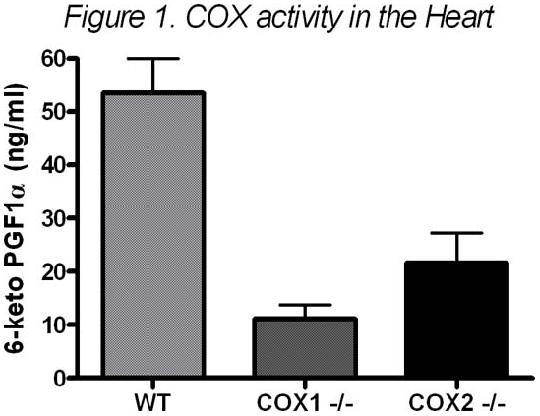Print version
Search Pub Med

Effect of COX-1 or COX-2 gene deletion on prostacyclin formation in the heart Background: Prostacyclin is an anti-thrombotic hormone released by a range of cell types, most notably endothelial cells. Prostacyclin is formed by the concerted action of cyclo-oxygenase (COX) and prostacyclin synthase. COX exists in two isoforms; COX-1, generally expressed constitutively, and COX-2, expressed at sites of inflammation and at discrete sites constitutively. Analysis of controlled trials and real world use indicate the use of COX-2 selective inhibitors is associated with an increased risk of thrombotic events (1). However, in almost all vascular tissue from healthy mammals COX-1 predominates greatly over COX-2 (2). Interestingly, Wang et al recently demonstrated that cardiomyocyte selective deletion of COX-2 altered cardiac rhythm and function (3). Here we have investigated the relative roles of COX-1 and COX-2 in the production of prostacyclin by mouse hearts.

Discussion: These data suggest that both COX-1 and COX-2 support prostacyclin production healthy mouse hearts. 1.Bresalier et al. (2005) N Engl J Med 352(11):1092-102. |
|

